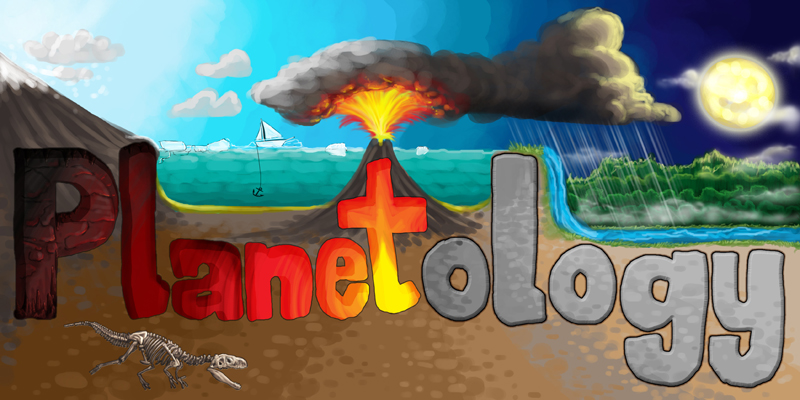Jupiter
Article curated by Grace Mason-Jarrett
It’s sometimes hard to imagine that within our own solar system are worlds so different to Earth, with rings spanning thousands of kilometres, and storms which rage for thousands of years. Jupiter, named after the Roman king of Gods, is the most striking in colour. With its terracotta hues and milky bands, not to mention the Great Red spot, Jupiter’s atmosphere portrays complex and intricate weather patterns which fester deep inside the thickest atmosphere in the solar system. In 2011, NASA sent a spacecraft to Jupiter – Juno – which landed on July 4 2016. In particular, the mission aims to understand the origin and evolution of Jupiter, search for evidence for a solid planetary core, map its magnetic field, observe its auroras, and measure any water and ammonia that can be found there.
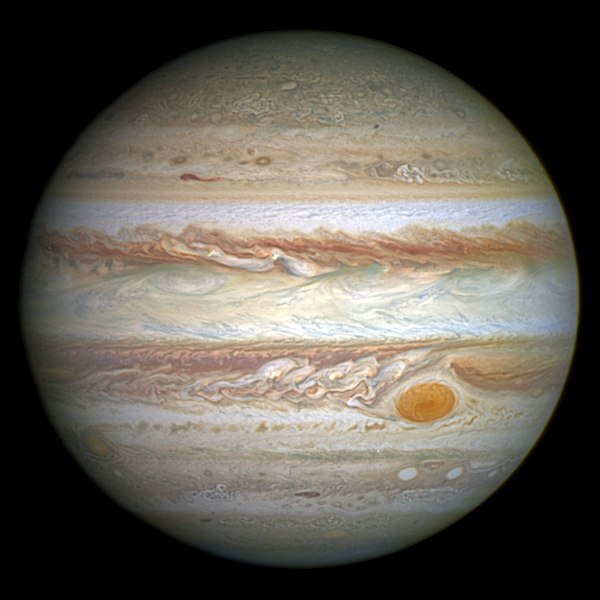
Stormy Jupiter
Jupiter is famous for its Great Red spot, something which many of us know to be a gargantuan storm. Jupiter is riddled with storms, with wind speeds on the planet reaching up to 384 mph – more than twice the highest speed recorded in the devastating hurricane Katrina (175 mph). The Great Red Spot is the largest storm of all, so large that three Earth-sized planets could be accommodated inside the oval-shaped tempest. Astronomers have been making observations of the Great Red Spot for more than 350 years, but still are unable to detangle the mysteries surrounding it. Although Juno has the power to image up to 350 km deep into the Jovian atmosphere, it turns out that the Great Red Spot is deeper than this. Measurements of its temperature show that for the first 80 km it is cooler than the surrounding atmosphere, and below that, it’s warmer. We don’t know why, but it could be linked to how the storm started, and whether it's permanent or will disappear with time.
The second largest storm observed on Jupiter is one known as Oval BA, which formed in 2000 when three smaller storms merged to form one. As wide as the entire planet Earth, Oval BA is a seriously powerful weather system.
Both of these anti-cyclonic storms reside in the southern hemisphere of Jupiter, and both appear as a dusty brick-red blur. Astronomers are puzzling over the reason for this colour since their discovery. Observations of Oval BA have seen the storm acquire the hue as it ages, while the Great Red Spot has been red for as long as we have been able to see it. Based on this, some suspect that perhaps with maturity comes reddening for these systems. They think this could happen because, as the hurricanes build up power, they rise above the thick cloud layers and interact with sunlight. The clouds on Jupiter are made mostly of ammonia, and it is this ammonia which they think changes colour from white when newly formed to reddish with ultraviolet exposure. Supporting this theory is the observation that the poles are bluer than the equator – where less sunlight reaches. The Great Red Spot is believed to rest 8 kilometres above its surrounding clouds[1].

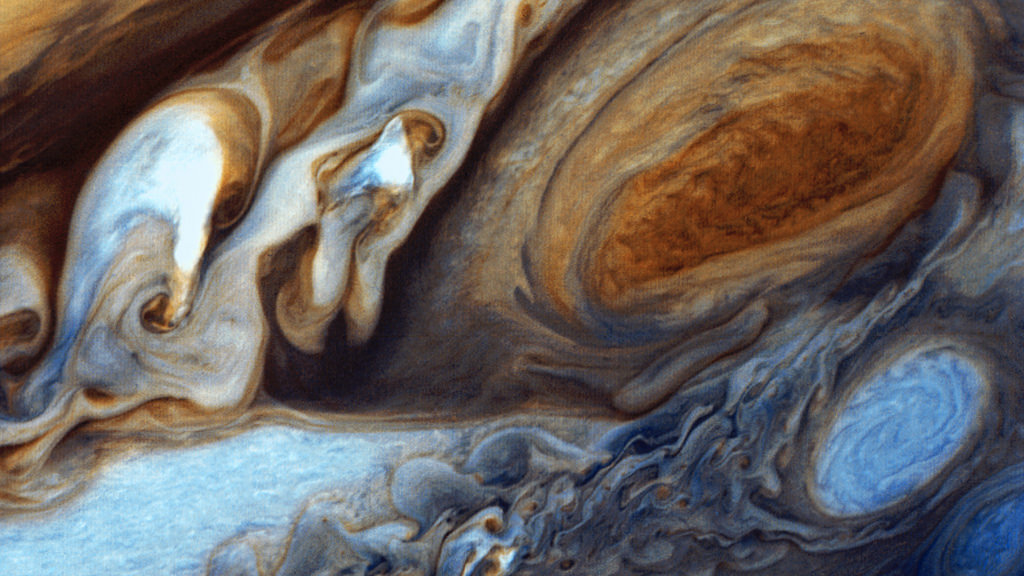
Even more baffling, scientists have observed the Great Red Spot shrinking in diameter[2]. Data collected between 1996 and 2000 showed that the storm lost 15% of its diameter over the four years – that’s 1 km per day! In fact, it may have lost 50% of its size since records began in 1880. It's not even clear how old the storm is nor how large it was at its peak. And its not slowing down. The oval shape of the Great Red Spot is expected to become a circular storm by 2040. Observations of "blades" and "flakes" spinning off into space suggest it might be nearing an end to its lifetime. Scientists have also seen something they called the Red Spot Hollow: a dark area surrounding the Great Red Spot. And it’s growing too.


As well as the well known Great Red Spot, a Great Blue Spot has been discovered on Jupiter during the Juno mission. In this region, the magnetic field is very very concentrated. We don’t know much more about it, including how it formed, how it might change, nor what it’s lifetime is. Scientists are busy gathering data to learn more about it.


Lightning on Jupiter occurs much more often and is much more like ours than scientists thought. Juno has found 1,600 lightning pulses, far more than detected by Voyager 1, in 1977, when they were described as “whistlers” because of their low pitch. In fact, we think the frequency is similar to on Earth – which scientists find particularly weird because the two planets are so different. This also means they’re left wondering why the pitch of lightning on Jupiter is so different to on Earth. Scientists think it might discharge more slowly, or something in the Jovian atmosphere absorbs the higher frequencies. The origin of lightning on Jupiter is thought to be similar to that on Earth. Given we don’t understand it’s origins on Earth very well, studying it on the distant planet could help us piece together a fuller picture of this natural phenomenon. However, one thing is backwards: where lightning clusters. On Earth, it’s mostly around the equator, and rare at the poles, whilst on Jupiter it’s common near the poles and never seen at all at the equator. Scientists are still exploring why.


Wet wet wet
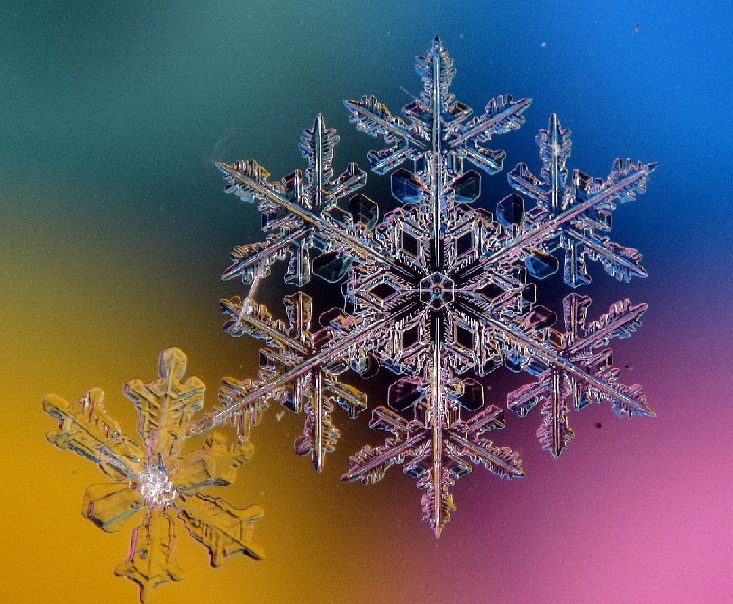


Back in 1995, the Galileo spacecraft threw a probe into the Jovian atmosphere. It transmitted an hour of data, then died. In that time, it recorded a much drier and windier environment than scientists thought Jupiter had, leading them to hypothesise that it had found a desert. But Juno data agrees: in fact, it thinks the entire equatorial belt is dry and windy, with lots of “hot spots” all over the planet. NASA scientists say these findings could even explain the shallow lightning that is sometimes seen on Jupiter, high altitude electrical discharges that happen when ammonia mixes with water. This mixing makes ammonia-water hailstones known as mushballs. Heavy, they drop, and the atmosphere here gets depleted in both ammonia and water. In the same places, we see “pop-up” clouds that could be made of water, ice, ammonia, or a mixture. They may be the tops of shallow lightning storm clouds. Juno has measured lightning storms on Jupiter using radio waves, however, and finds storms happen more often at the poles than at the equator (we don’t know why). Despite confirming the reality of Jovian deserts, Juno has also found more water than otherwise expected, ~0.25% of equatorial atmospheric molecules. It’s just that there’s not much atmospheric mixing: i.e. the water is not evenly distributed. In fact, it’s so unevenly distributed, scientists are wondering why. The amount of water on Jupiter could tell us something very important for our solar system’s history: physicists think Jupiter was the first planet to form, and sucked up much of the gas, water, and dust leftover from the formation of the sun, so how much there is could lay the blueprint for the story of our world. And what we learn could be extended to other exoplanets, teaching us about how other systems formed.



Up up in the air
The Jovian atmosphere consists of the troposphere nearest the planet, the stratosphere, the thermosphere, and the exosphere. The troposphere is where many of the weather events happen and where we think the ice clouds may be. The stratosphere, > 300 km, is a freezing (110 K), high pressure layer containing hazes of hydrocarbons, warming gradually into the hot (1100 K) thermosphere where the aurora is > 1000 km. In the exosphere, space and the Jovian atmosphere mix, and particles are exchanged.


Further, in what is known as the "deep atmosphere", Jupiter forms phosphine. Here, high pressures and temperatures over 800 K provide enough energy to start the synthesis, making phosphine a thermodynamically favourable find. Convection currents stir phosphine throughout the atmosphere, replenishing the uppermost layers where otherwise, exposed to UV light, it breaks down rapidly, leaving phosphorus. This phosphorus may be responsible for the reddish glint to Jupiter’s clouds (but scientists aren’t sure). Mass spectrometry has also revealed the presence of cyanopolyynes on the gas giants. We don't know where these molecules come from, and scientists theorise there are different mechanisms behind the appearance of ones of different chain lengths[4]. Reactions may be activated by ultraviolet light, and take over 1 million years.


Inside the giant
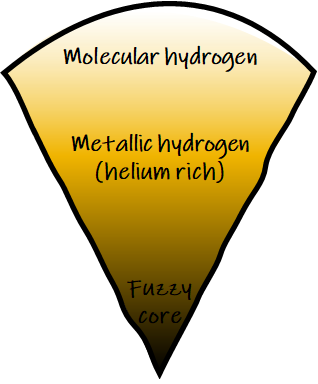


Jupiter's magnetosphere
The metallic hydrogen deep inside Jupiter is thought to be responsible for its magnetosphere and aurora. This liquid form of the element behaves a bit like metal; for example, it can conduct electricity – and with that comes magnetism. Built with a 20 radius and designed to spin, Juno is made to measure the magnetic field of Jupiter. Thanks to Juno, we now know that the planet’s dipole is the opposite way round (North and South) to Earth, and tilted ~10o from its rotational axis. The strength of the magnetic field (20 x that of Earth’s!) allows us to calculate how long a day is on Jupiter – because we can’t tell just by looking at the bands: they seem to move in opposite directions to each other and at different speeds! It also allows Jupiter to deflect solar winds as far out as 6 million km from the planet and hold onto its atmosphere. At this point, we also see weird effects that Juno is attempting to explain, such as ring-like features, known as Kelvin-Helmholtz instabilities, which scientists think may travel along the planet’s magnetic field lines. As well as the dipole, these include weaker quadrupoles and octupoles.


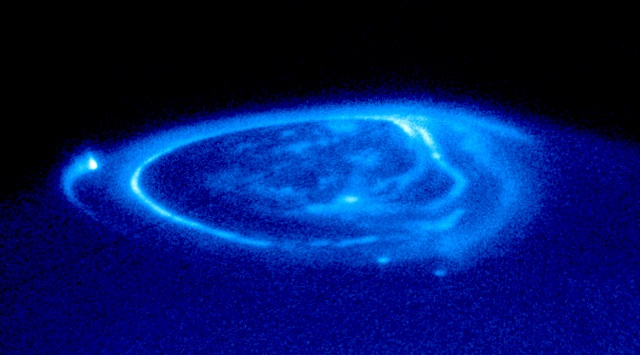
Jupiter has the brightest aurora in the solar system, carrying 100 TW of energy, so much that Jupiter is a bit like a weak radio pulsar. The aurora are mostly unseen by the naked eye, radiating in the ultraviolet. Scientists found that there wasn’t actually enough direct current from the magnetosphere to account for its brightness, so decided it must be mostly alternating current, which they theorise comes from turbulence in the magnetic field. This makes sense when you compare north and south poles: the magnetic field is complex at the north, and so is the aurora, whilst it’s smooth at the south, giving a structured aurora. Structures include ring shapes that expand at 3.3-7.7 kilometers per second (scientists think this happen because of charged particles entering the magnetosphere). One new ultraviolet feature found by Juno may come from the place where Jupiter’s magnetosphere meets the solar wind, a supersonic stream of charged particles emitted by the sun. The aurora also has bright spots where the flux tube from the moons Io, Europa and Ganymede meet the planet. Despite decades of observations, we still don’t understand these interactions between charged particles or the solar wind and the magnetosphere, so Juno is continuing to study the aurora.


The highly volcanic Jovian moon Io ejects as much as 1,000 kg sulfur dioxide gas into space per second, which forms into a high energy particle plasma torus around the planet. Scientists think the magnetic field of Jupiter holds it in place and rotates it round. When Juno investigated, scientists thought its camera would be quickly destroyed, but somehow it survived, getting accurate readings of the flux tube of electrical current between the moon and planet: 400,000V or 1-5 million A. This phenomenon is known as a Van Allen radiation belt, and it protects the planet's atmosphere from being whisked away by solar winds. So far the mechanisms behind the radiation belt are unknown, but the radiation is lower than might be expected from other measurements.


Jupiter is the only planet we’ve found with a changing magnetic field structure. Known as secular variation, it’s a mystery why it happens, although scientists theorise it may be driven by the base of the atmosphere. It’s strongest in one particular spot – around the great blue spot, a weird blip where the magnetic field is super concentrated.


Deep atmosphere
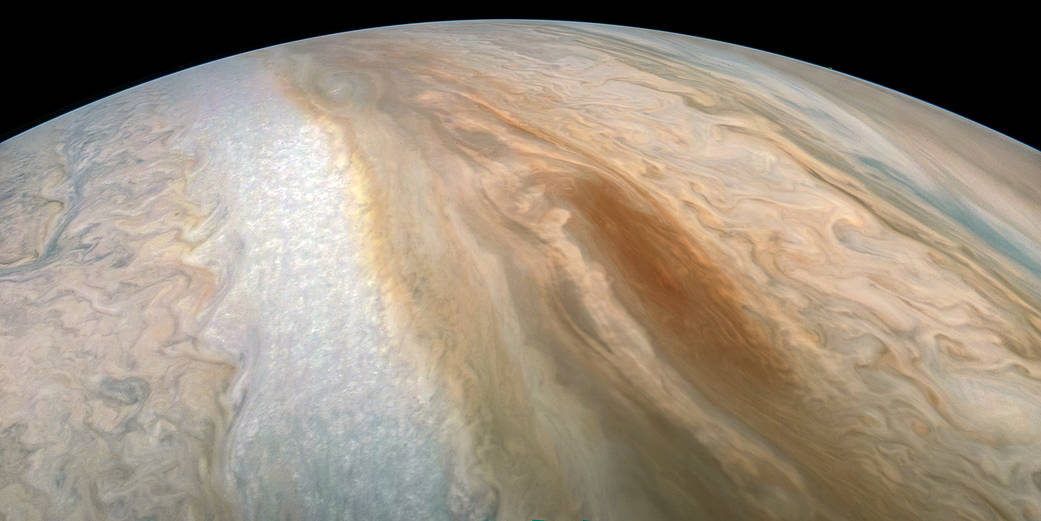


The red, orange, yellow, brown and white streaks observed in Jupiter’s atmosphere are made of ammonia dragged across the sky by jet streams. Researchers think that Jupiter’s magnetic field keeps its jet streams straight and rigid. Juno measured these currents, finding they penetrated 1,864 miles (3,000 km) deep and then cut off completely, with none at any greater depths. On Earth, similar streams are wavy rather than straight, and play a key role in the weather and climate. The fact that there are no continents nor mountains to disrupt the jet streams may also explain why they’re so straight.


Energy imbalance
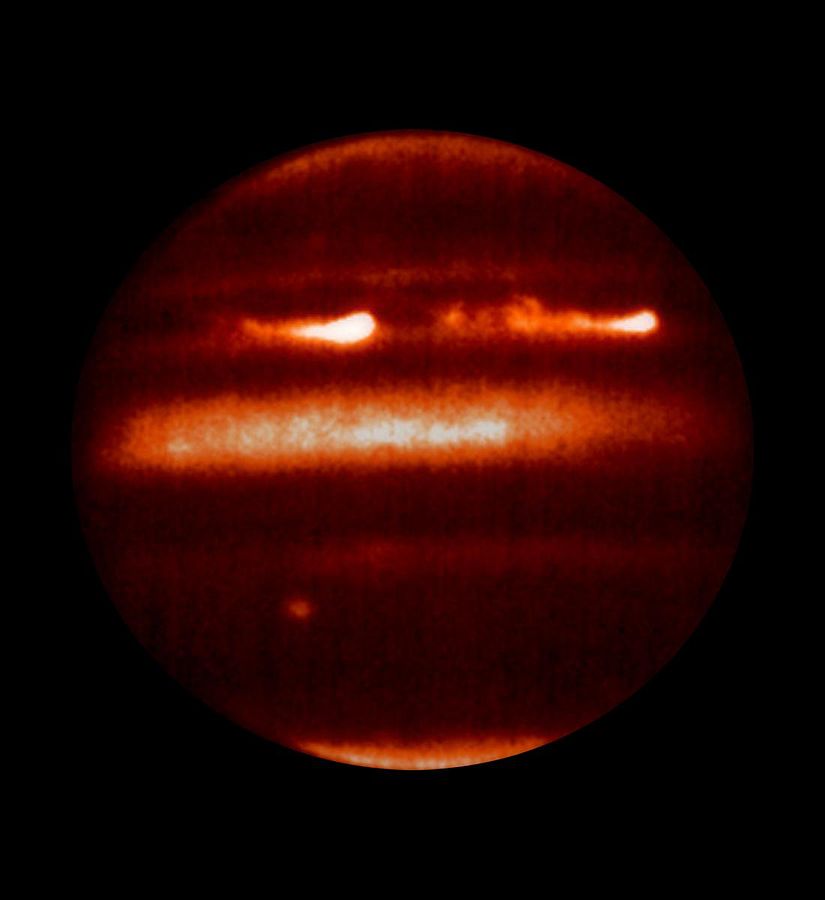
Learn more about Energy imbalance of the giant planets.


 3
3Strange satellites
The accidental discovery in early 2014 that the moons of Jupiter don’t go completely dark while being eclipsed by the great planet from the sun could tell us more about the upper layers of Jupiter’s atmosphere. One possible explanation is that the upper layers of Jupiter’s atmosphere are providing a dim glow, though the cause of this is a mystery. Some astronomers have guessed that perhaps the tiny particles from which the great clouds of Jupiter form are to blame. ‘Hazes’ or ‘aerosols’, as they are known, could be scattering sunlight from the bright side of the planet round to the moons. This effect is observed to happen on our own planet, it is what causes the moon to appear red during total eclipse events. If this theory can be confirmed, then we will gain a valuable insight into the workings of Jupiter’s colourful weather systems.


Scientists have discovered that the interaction between Jupiter’s moons Io and Ganymede and the planet’s magnetic field can be mapped in its aurora. Using an Infrared Auroral Mapper (JIRAM) instrument, Juno has revealed that these interactions are much more complicated than previously thought. Io, the moon closest to Jupiter, has the most intense footprint – but instead of a big round blob like scientists predicted, it looks like a Von Kármán vortex street: swirls that alternate from left and right radiating off a round body. Ganymede, on the other hand, provides a never-before-seen double footprint, with two blobs 100 km apart. The positions of the moon footprints are a bit off where researchers expected them, so they are busy refining their models to better understand their origins.


Since Galileo first observed four objects orbiting Jupiter in 1610, over 60 other bodies have been spotted in orbit around the largest planet in our solar system, and new ones (small ones only a few kilometres across), are still being discovered. But how many moons does the gas giant have? Because the most recent Jovian moons to be discovered are so small and the system is so distant, they had escaped detection until now. For this reason, it is highly likely that there are even more bodies of this size, or smaller, orbiting the planet. So how many moons does Jupiter actually have?

One of Jupiter's moon, Europa, holds some of the best chances in the solar system for sustaining life. We know that disequilibrium and dynamic change are characteristic of global cycles, which could potentially sustain an interacting biosphere. Planets and moons with lots going on are instinctively considered more "alive" than those that are unchanging rocks. So with the active energy source supplied by tidal forcing, and the possibility of a watery abundance, can we expect to find mermaids swimming beneath Europa's ice shell?
Learn more about life on Europa.


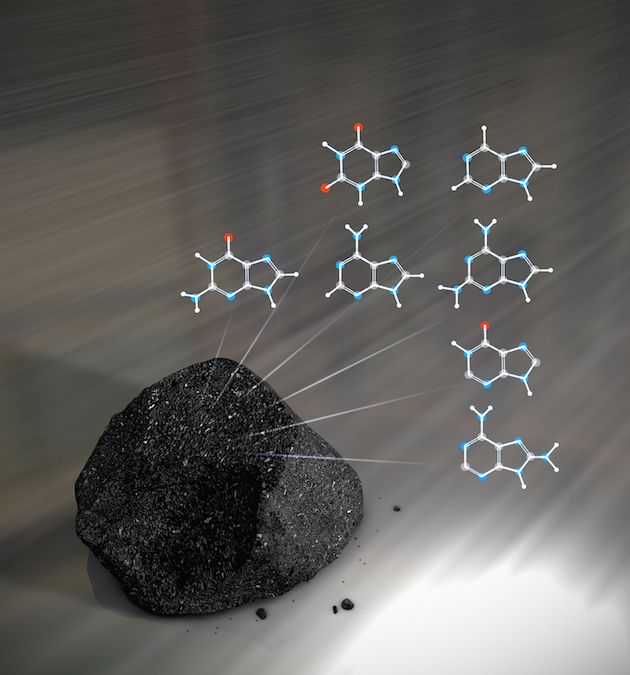


The original Juno mission was extended until July 2021, gathering more data. So far they have taken spectacular pictures and found more water than anyone thought in the atmosphere. It has also been studying Jupiter's moons, and discovering new phenomena there.
This article was written by the Things We Don’t Know editorial team, with contributions from Irish Space Blogger, Ed Trollope, Jon Cheyne, Cait Percy, Grace Mason-Jarrett, Rowena Fletcher-Wood, and LDJ.
This article was first published on 2015-08-27 and was last updated on 2021-07-11.
References
why don’t all references have links?
[1] Mousis, O., Marboeuf, U., Lunine, J. I., Alibert, Y., Fletcher, L. N., Orton, G. S., ... & Ellinger, Y. (2009). Determination of the minimum masses of heavy elements in the envelopes of Jupiter and Saturn. The Astrophysical Journal,696(2), 1348.
[2] Choi, D. S., Banfield, D., Gierasch, P., & Showman, A. P. (2007). Velocity and vorticity measurements of Jupiter's Great Red Spot using automated cloud feature tracking. Icarus, 188(1), 35-46.
[3] Ingersoll, A. P., (1990) Atmospheric dynamics of the outer planets. Science 248:308-315. doi: 10.1126/science.248.4953.308.
[4] Chapman, J. F., et al. Cyanopolyynes in hot cores: modelling G305. 2+ 0.2. Monthly Notices of the Royal Astronomical Society 394.1 (2009): 221-230.
Recent Jupiter News
Get customised news updates on your homepage by subscribing to articles









